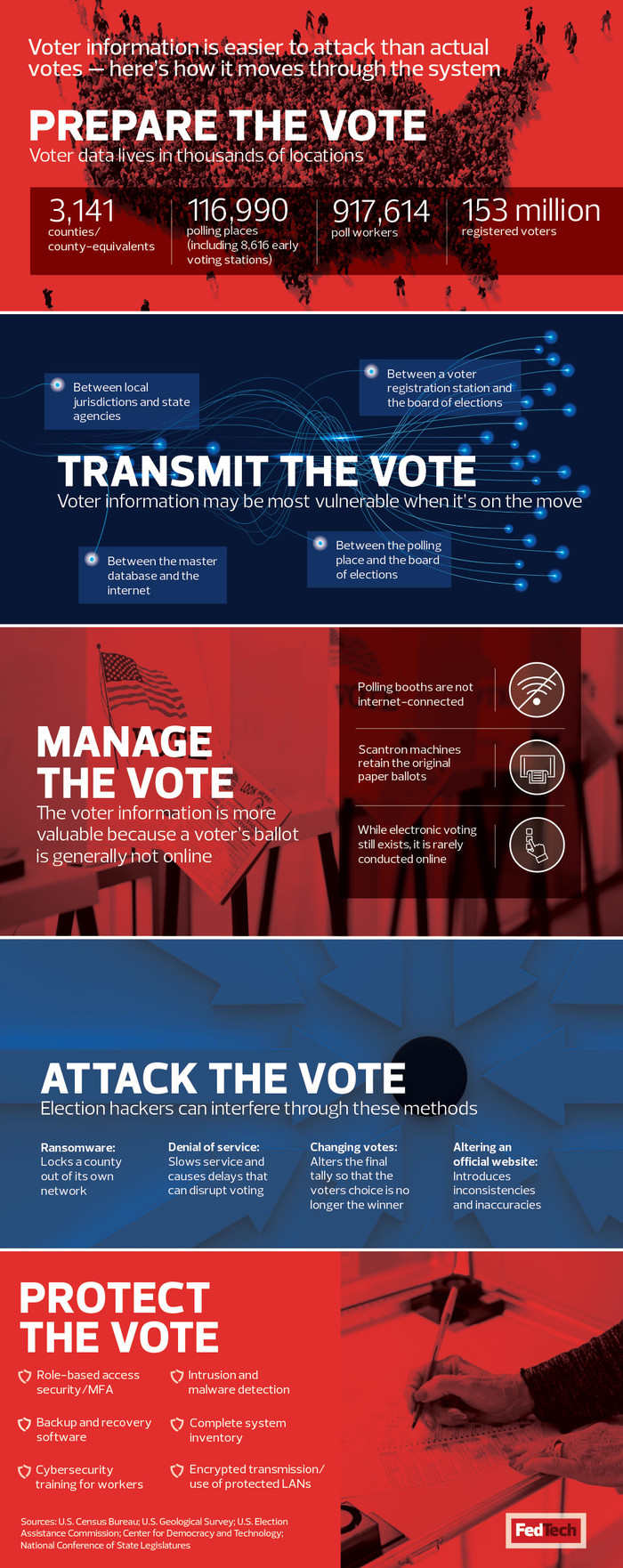Election Security 2020: How to Protect Election Data and Voter Information [#Infographic]
Voters provide the foundation for the nation’s election system, not just in their actions, but in their names, addresses and Social Security numbers — information that is tempting bait for malicious actors who want to affect an election’s outcome.
Secretaries of state and local boards of election attempt to protect their voter databases as closely as possible, even as they must keep that information accessible to temporary poll workers, election officials and state officials who need it to do their jobs.
A voter database lives in many locations — the site where a citizen actually registers, the board of elections itself, the electronic poll books at polling places on Election Day, websites where the public can go to check registration status or find election results. Like any system with multiple endpoints, security efforts focus on the data, not just the network.
No matter what kind of election is being held, be it for city council in a small town or president of the United States, protecting the network and databases that make voting possible is essential. Here’s a look at how it’s done:












